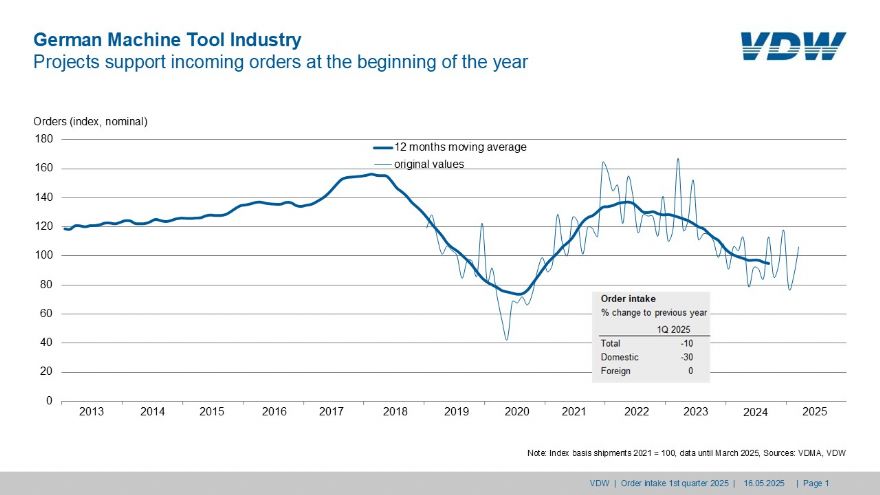
Orders received by the German machine tool industry in the first quarter of 2025 were 10% down on the same period last year. Domestic orders fell by 30%, while orders from abroad remained at the previous year’s level.
Dr Markus Heering (pictured below), executive director of the
VDW (German Machine Tool Builders’ Association) in Frankfurt am Main, said: “After a generally weak start to the year, March brought a small ray of hope. Orders increased by 2% – an initial positive signal that is primarily due to demand from abroad, particularly from the Eurozone. By contrast, the German domestic market continues to fall well short of expectations.”

Europe remained the top sales market for the German machine tool industry in the first quarter — there was a noticeable increase in demand from many key countries. Overall, the region grew by almost a third, albeit from a low level.
The downward trend in Asia also came to an end in the first quarter. Increasing by 6%, the region saw positive growth again for the first time. China recorded slight growth again after a long hiatus and replaced the USA as the most important single market for German machine tools.
On the American continent, positive impetus came above all from projects in Mexico. Orders from the USA, on the other hand, fell by 10%. Mr Hearing emphasised: “Nothing has changed, however — US industry requires German manufacturing technology in order to modernise – there are not enough suitable domestic suppliers.”
Among the top customer industries, medical technology and aviation are the sectors generating the strongest demand, according to an economic survey of machine tool and component manufacturers conducted in the first quarter of 2025. There are also signs of recovery in the engineering sector as a whole, with encouraging growth in the first quarter of this year. However, the automotive industry, along with export controls and high costs, remain the largest obstacles to a turnaround.
Mr Hearing concluded: “It is too soon to speak of a trend reversal, especially in the face of increased international uncertainty due to the erratic tariff policy of the US administration.”